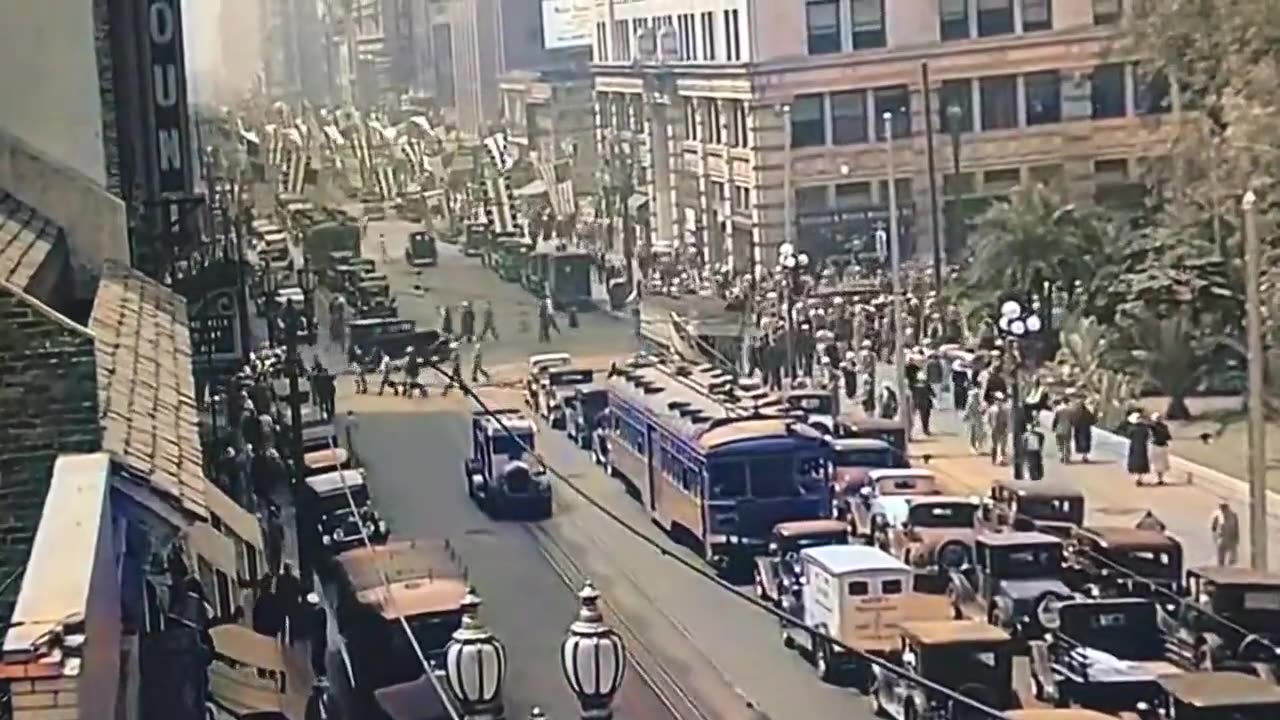Premium Only Content

Los Angeles in the 1930s
Los Angeles in the 1930s," captures a bustling urban scene from nearly a century ago. It showcases a vibrant city street filled with cars, trolleys, and pedestrians. The architectural style of the buildings and the design of the vehicles provide a nostalgic glimpse into the past, highlighting the technological and infrastructural advancements of that era.
Despite the significant advancements in technology, infrastructure, and societal structures over the past century, human nature has remained relatively constant. This paradox can be explored through several lenses:
Technological Progress vs. Human Nature:
Technology has evolved rapidly, leading to improvements in communication, transportation, healthcare, and many other areas. However, human emotions, instincts, and behaviors are deeply rooted in our biology and psychology, which change much more slowly. Issues like greed, power struggles, and inequality have persisted throughout history, regardless of technological advancements. Moral and Ethical Challenges: Each era faces its own set of moral and ethical challenges. While the context and specifics may change, the underlying human tendencies towards certain behaviors remain. For instance, issues like corruption, discrimination, and violence have existed in various forms throughout history.Societal Structures and Systems: Societal progress often depends on the structures and systems in place. While advancements can lead to improved living conditions and opportunities, they can also perpetuate existing inequalities or create new forms of division. The struggle for power and resources is a recurring theme in human history. Cultural Continuity: Cultural values and norms are passed down through generations, maintaining a degree of continuity in how societies function and individuals behave. This cultural transmission helps preserve both positive and negative aspects of human behavior.
-
 1:04:01
1:04:01
Timcast
2 hours agoTrump Just NUKED Global Economy, Tariffs Ignite Trade War, Markets COLLAPSING
128K106 -
 1:54:08
1:54:08
Steven Crowder
5 hours agoLiberation Day: How Trump's Tariff Strategy will Reset the Global Order
309K171 -
 1:58:23
1:58:23
The Charlie Kirk Show
2 hours ago“Liberation Day” Reaction + Military Standards + Tariff History | Thibeau, Hanson | 4.3.25
40K8 -
 LIVE
LIVE
SternAmerican
23 hours agoIntegrity in Action call With Steve Stern and Raj Doraisamy Thursday, April 3rd at 2:00PM EST
82 watching -
 LIVE
LIVE
Rebel News
1 hour ago $0.70 earnedTrumps new global tariffs, Poilievre and Carney respond, Tamara Lich verdict | Rebel Roundup
930 watching -
 DVR
DVR
TheAlecLaceShow
2 hours agoTrump Tariffs Take Effect | Alec Lace in the Rose Garden | Guest: Jim Pfaff | The Alec Lace Show
3.75K1 -
 LIVE
LIVE
Major League Fishing
2 days agoLIVE! - MLF Bass Pro Tour: REDCREST - Day 1
5,143 watching -
 LIVE
LIVE
Viss
2 hours ago🔴LIVE - How to Continuously Stack Win in Solo PUBG!
433 watching -
 59:50
59:50
The Rubin Report
3 hours agoEconomist Destroys Jon Stewart’s Narrative w/ Facts in Only 3 Minutes
49.8K18 -
 DVR
DVR
Flyover Conservatives
13 hours agoThe Tariffs Are HERE — How Will This Affect You?!; 44,000 COVID Tests, 19,000 Patients - Dr. Michael Schwartz | FOC Show
21.1K2